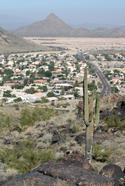There are few more bankrupt arguments against suburbanization than the claim that it consumes too much agricultural land. The data is so compelling that even the United States Department of Agriculture says that "our Nation's ability to produce food and fiber is not threatened" by urbanization. There is no doubt that agricultural production takes up less of the country's land than it did before. But urban “sprawl” is not the primary cause. The real reason lies in the growing productivity of American farms.
Since 1950, an area the size of Texas plus Oklahoma (or an area almost as large as France plus Great Britain) has been taken out of agricultural production in the United States, not including any agricultural land taken by new urbanization (Note 1). That is enough land to house all of the world's urban population at the urban density level of the United Kingdom. read more »





















